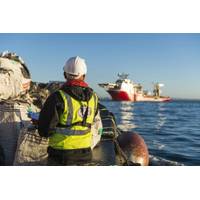LNG Shipping Market in Recovery Stage: Flex LNG
Norwegian-born billionaire John Fredriksen-owned LNG shipper Flex LNG (FLXNF) believes that the LNG market is in the early stages of a multi-year recovery.
According to a report by Flex LNG, the market for seaborne transportation of LNG has improved significantly during the third quarter with the primary driver being the nearly 50 per cent year on year growth in imports to China.
Additionally there is high demand growth in other more mature markets such as South Korea and Taiwan.
Flex LNG pointed out that Bloomberg New Energy Finance estimate demand growth of approximately 8.5% in 2018, adding 24MMtpa to the global market which will reach a total of 308MMtpa by year endSouth and Southeast Asia are also expected to show strong growth in 2018 and 2019.
Future growth will come from new liquefaction trains under construction, expansion projects of existing terminals such as the announced addition by Cheniere of a train 3 at their Corpus Christi terminal and new greenfield projects such as the recently announced Canada LNG.
According to Bloomberg, North America will soon become the largest supplier of LNG with about 65MMtpa of additional capacity likely to reach FID. In addition they have assumed that Quatargas will follow through on their intent to expand their nameplate capacity from 77 million tonnes to 110 million tonnes.
Other notable projects which are in process of reaching Final Investment Decision (FID) are Anadarko’s Mozambique LNG project with close to 13 million ton capacity, expansion of capacity in Papua New Guinea of about 8 million tonnes as well as the Russian projects related to expansion of Sakhalin and the Arctic LNG greenfield.
The main hurdles for taking FID on this new capacity is traditionally securing off-take agreements in order to finance the projects. Securing upstream feedstock is seen to be less of an issue for most projects as there are ample supplies of available gas.
The LNGC fleet now exceeds 450 vessels and approximately 50 vessels are expected to be delivered in total for 2018. The shipping market is poised to improve as a ramp-up of US LNG export projects coupled with limited fleet growth have created a favorable backdrop over the next few years. Based on supply/demand model, it is estimated that 90 more ships will be required by 2020, resulting in a potential shortage of 30-45 vessels (Seaport Global).
Fearnleys estimates a shortage of 47 vessels. Demand growth has been driven primarily from Asia with China committed to diversifying its energy portfolio to focus on cleaner energy sources to improve the air quality in metropolitan areas. Europe is also expected to increase its LNG imports during the year due to improved general macroeconomic conditions and diversification of supply.











